Property
Stats and comments on how to boost kerb appeal
04/03/19 22:24 Filed in: Property
With new data from Reapit showing an unprecedented five-year sharp drop in property transactions in the last quarter, (36 per cent lower than the long-term average), boosting your home’s kerb appeal is more important than ever. Powertools2U has revealed that almost half of potential home buyers take 20 per cent off the property’s asking price if the house has an untidy exterior. David O’Mara, marketing manager at Hörmann UK, sponsor of the upcoming National Homebuilding & Renovating Show (28-31 March, NEC, Birmingham), provides advice on how to make a great first impression and maximise your potential selling income.
“Kerb appeal is all about your home’s exterior making a good first impression. While it’s easy to focus your efforts on the interior, it is important to remember that the exterior of your property is what everyone, from visitors through to potential buyers, will see first.
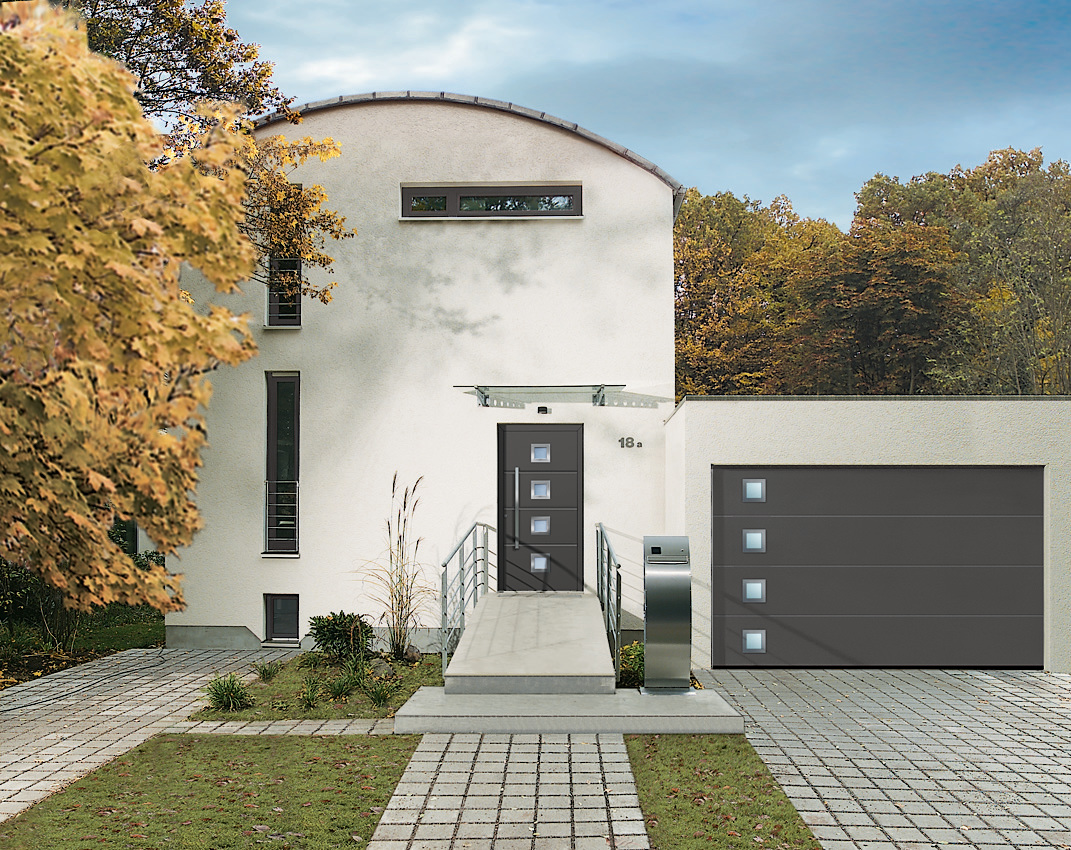
“In fact, those savvy homeowners who are keen to increase their property value can do so by ensuring paintwork is fresh, windows and doors are clean and your driveway and garden is neat and tidy. Nearly a third of Brits are willing to pay 25 per cent more for a house which looks stylish from the outside – proof that first impressions count when it comes to the home.
“Garage doors take up a large part of your home and an out-dated or scruffy garage door will instantly affect the look of your property. Nowadays, there is so much choice that the previous ‘one size fits all’ approach is no longer appropriate. Thermally efficient sectional garage doors from Hörmann, for instance, are available in a wide variety of styles and surface finishes that will suit all types of homes.
“For those trying to boost kerb appeal, we recommend customers choose a garage door in a colour which complements existing windows and doors. A stone grey theme for all your exterior features will completely transform your exterior and create a harmonious look.”
For more details, visit Hörmann UK on stand number D131 at the National Homebuilding & Renovating Show (28-31 March, NEC, Birmingham) or visit www.hormann.co.uk
Architecture designed to disappear into the landscape
13/01/16 12:22 Filed in: Property
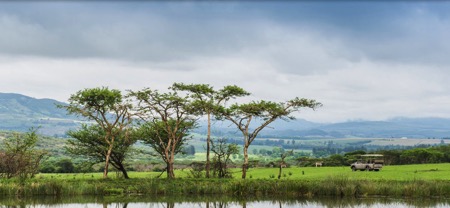
LIVING WILD - AN INVISIBLE HOME ON A SOUTH AFRICAN NATURE RESERVE
German Industrialist First To Buy At Mahathunzi Whose Architecture Is Designed To ‘Disappear’ Into The LandscapeIf you are dreaming of a home in unspoiled Africa, living among the continent’s big game animals and astonishing bird life, there is a small development in South Africa with your name on it. Just 49 homes are going up on the border of a nature reserve that has won internantional plaudits – Karkloof Safari Spa. On its border the Mahathunzi development will be the African home to those lucky 49 buyers.
The name "Mahathunzi" tells you precicely what you will be getting. It is from the Sanskrit word "Maha", which means greatness, and the Zulu "ithunzi", which means shadow or aura. And the place starts off with an aura of greatness which the architecture is designed to enhance. Plans for the area to become a UNESCO protected reserve are in the pipeline.
A renownded South African architectural practice Elphick Proome which has experience across seven African countries and includes the construction of safari lodges and homes have the design brief.
Their latest challenge, set by Mahathunzi owner Fred Wörner, is to build 49 eco-homes, each on its own 80 acres of lush subtropical bush, on the border of the spectacular Karkloof Safari Spa in KwaZulu-Natal. This almost secret, hidden escarpment valley, fringed with cliffs, waterfalls and mist forest is, according to lucky visitors, a piece of heaven on earth where time truly stops. Karkloof is a wellness and wildlife retreat, that mixes a very successful game breeding programme with one of the best spa resorts in Southern Africa.
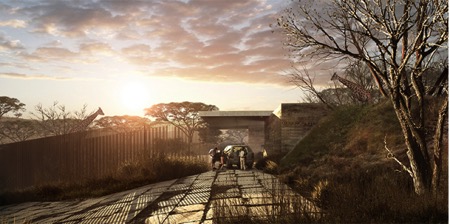
First to commit to buying a plot (two in fact) at Mahathunzi is German engineering industrialist, Robert Fellner-Feldegg, 50, whose company produces leading water valves for dams and hydro power projects, and his wife Eva, a designer and editor. They decided to buy and build following six visits to the Karkloof Safari Spa where they fell in love with the landscape and nature. They have been visiting South Africa up to ten times a year since 2004.
Robert says: “Besides the fantastic area, it was the architectural concept, with the absolutely professional developing team around it that gave us the confidence to take on such a project from abroad. The fact that Hilton College was close by was another factor influencing our decision as one of our sons will board at Hilton. The house we are building has two levels absolutely integrated into the landscape. A family part and a guest part. It will be an ‘island’ for us and our guests. We always have a positive impression of the people and the country and we always feel very well here. So we hope to spend between three and six months a year at Mahathunzi.”
So how do you square the circle when trying to build a no-impact property in a nature reserve? It is a tough challenge but Fred Wörner says he will ensure that it happens in the most sensitive way possible. He says: “The site is so spectacular that it demands homes that are built sensitively, demonstrating an intense humility in relation to the landscpe. They have to be the least intrusive, least impactful, leaving the lightest footprint possible.” Client expectations he says will be for distance from neighbours, privacy, space and connectivity to nature.
He points out that the site is unique in being utterly wild and unspoiled yet offering access to city life just 15 minutes away in Pietermaritzburg or an hour into Durban. The distinguished school, Hilton College, one of the best in the country is a near neighbour. Hilton College has a student exchange programme with: Eton College (England); Gordonstoun (Scotland); Harrow School (England); Wrekin College (England); Salem Schule (Germany); and similar schools in the USA and Australia.

The aim at Mahathunzi is ultimately to allow one to live at one with nature and the animals who call this place home. So drinks at sunset on your own deck will be with giraffe and antelope on hand, a luxury not available to many. There will be none of the larger dangerous animals kept within the bounds of the game reserve itself. The birdlife brings its own dazzling charm and something that is not there, is one of the greatest luxuries, the lack of any man-made noise. The silence between the birdsong lulls one into a different mind-set, aided by the signature scents that can only be Africa.
Glass walls, deep shaded verandas and infinity swimming pools all link the homes to their surroundings, bringing Africa right into your living room as you sit by the fire. At night the splendour of the African night sky adds a new dimension to the pleasures of this place. Roofs will be of living turf or fieldstone making the homes virtually invisible from above and in the veil of the bush.
Fred Wörner, comments: “Our major interest is from Europe and the USA, but also from China, South Africa and Nigeria. The buyers are people who want wildlife estates without the work involved in running a safari park themselves. A concierge service will take care of everything they need when they are here or abroad.”
Mahathunzi, is an unspoiled paradise with plains, cliffs, valleys, rivers and acacia bush, covering 1,000 hectares. The presence of a huge variety of wildlife literally on your doorstep, grazing peacefully, is a sight that stays with you forever. The houses in this development will be almost invisible so that the landscape remains as intact as possible. The 49 plots of between 60 to 80 acres start at R4 million (£200,000), value-added tax (VAT) excluded.
"The primary objective for the houses at Mahathunzi is to respect the surrounding environment," says Wörner. He describes the guideline calling for simple, elegant structures, designed to be almost unnoticed in the "hiding" and merging with nature. Each is likely to be between 800 and 1,100 square meters and could be either fragmented buildings or single forms.

“The 49 owners will choose the site themselves and the house will meld into the contours and slope of the land. We will incorporate all the established trees into the design. The living areas will face northwest to the sunset and the dramatic views of the Karkloof Valley with the Albert Falls Dam in the distance. The bedrooms are designed with a view to the southeast, including Otto's Bluff, so you will wake up to the sunrise. The houses built with stone from the site and from local hardwoods will boast a rough textured quality. “The concept is to build homes that grow into and merge with the landscape, says Wörner, and he concludes: “"The challenge for this property, lies in the design of houses that master the art of disappearance."
These secretive hidden homes in this enchanted valley will include sustainable features, natural ventilation, large porches, low-power components and low-energy building materials. The cost of houses in Mahathunzi depend on size, building materials and finish. Costs would be around R20 000 per square meter (£1,000) for what is in effect a home on your own private safari park, but without the costs of running the park.
First to commit to buying a plot (two in fact) at Mahathunzi is German engineering industrialist, Robert Fellner-Feldegg, 50, whose company produces leading water valves for dams and hydro power projects, and his wife Eva, a designer and editor. They decided to buy and build following six visits to the Karkloof Safari Spa where they fell in love with the landscape and nature. They have been visiting South Africa up to ten times a year since 2004.
Robert says: “Besides the fantastic area, it was the architectural concept, with the absolutely professional developing team around it that gave us the confidence to take on such a project from abroad. The fact that Hilton College was close by was another factor influencing our decision as one of our sons will board at Hilton. The house we are building has two levels absolutely integrated into the landscape. A family part and a guest part. It will be an ‘island’ for us and our guests. We always have a positive impression of the people and the country and we always feel very well here. So we hope to spend between three and six months a year at Mahathunzi.”
For more info please visit www.mahathunzi.co.za
Buying off plan
21/12/15 08:26 Filed in: Property

As Battersea Power Station advertises flats which will only be ready for occupation next autumn, is buying off plan a good idea?
Purchasers should be aware of the many dangers that buying off plan can present.Usually, the developer is unlikely to produce a detailed specification, yet this is vital for a buyer. Glossy sales brochures showing similar schemes completed by the developer may not accurately reflect the property that you are buying.
Detailed plans and a full specification are essential, listing precisely what is being built and the quality and extent of fixtures and finishes included in the price. Paying a deposit and agreeing a price up front can result in savings when house prices are rising as some developers will consider reductions on the full sale price to reflect they have a sale before the property is built.
However, where prices are falling, the buyer could be locked in to a contract that requires them to pay more for the property than it may be worth when completed. Agreeing a price in advance of the development being completed can result in purchasers accepting to pay more than the property is sensibly worth in the open market, simply for the prestige of being one of the first owners.
If other buyers cannot be found at those levels, subsequent prices for other properties in the development may expose those earliest sales as excessive when the remainder of the scheme comes to be sold.
Then there is the added risk of the developer running out of funds before the scheme is complete. A buyer can then be faced with a lengthy and expensive legal battle to see the development finished or to recover their deposit, which in some circumstances may simply not be worth the effort. This is a costly error to be avoided.
Grillo LLP are at www.grillollp.com and Tel: 01483 860 600
Ski tourists tips
24/02/15 10:11 Filed in: Property
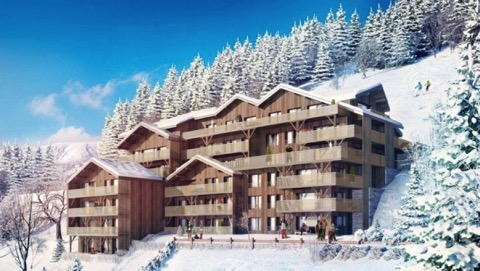
Eight tips for ski tourists turned property-hunters in the French Alps
Interest in French skiing property is expected to see a seasonal surge towards the end of this month, after British families return from their half-term ski break tempted by the idea of owning a ski home, said ski property specialist SkiingProperty.com in February, adding that the favourable exchange rate is also luring more UK buyers to market.
“An especially memorable ski holiday can be enough to make a potential buyer take the next step and begin a serious search for a ski home,” said Julian Walker, director at Skiingproperty.com. “Hence, after one of the busiest weeks in the ski season, a spike in interest isn’t unusual, especially with Sterling hovering around a 10-year high against the euro.”
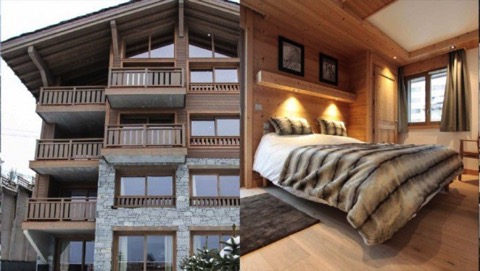
To assist first-time buyers in the French Alps considering a purchase in 2015, Skiingproperty.com has compiled an eight-point checklist.
1) Your resort. Think about its ski area – both the size and altitude (over 2,000 metres for guaranteed snow), lift infrastructure, transfer time, the option of driving from the UK, winter and leisure activities, amenities, shopping, ski schools and creches.
2) Seasonality. Will you use the property when the snow has gone and during the summer? If so, you’ll want to be somewhere that doesn’t shut down outside of the winter season and with plenty to do in the warmer months.
3) Location in the resort. Ski-in ski-out properties within walking distance of lifts and the resort centre are always the most sought after. But your money goes further if you buy outside a resort or a short drive from the slopes.
4) Leaseback or outright purchase? For access to a convenient, well equipped and completely hassle-free ski property, consider leaseback – remembering to check your annual personal usage, the annual maintenance costs and what rental return you will receive. Many leaseback ‘residences’ come with a spa, pool and communal areas, and properties are typically bought off-plan or new. Otherwise, for complete flexibility and for somewhere you can make a true second home, buy outright the usual way.
5) Rentals. If you intend to let your ski home, consider whether you will manage it yourself or through an agency, remembering to factor in any advertising costs and agency fees. Buying in a popular ski resort with a good snow record should deliver reliable rental yields – demand comes from the domestic (French) as well as international markets.
6) Currency. Good news for British buyers in 2015 is the stronger pound. In order to maximise this and get the best exchange rate available – and bring down the cost of your property in pounds, use a currency exchange specialist to send euros to France.
7) Mortgages. French mortgage rates, for residents and non-residents, remain at historic lows, with variable rates currently as low as just 2.2 per cent. Given the favourable exchange rate, a mortgage might make financial sense for many buyers.
8) Ongoing costs. French properties come with two types of council tax (‘taxe foncière’ and ‘taxes d’habitation’). Remember to factor these into your running costs. Check out any discounts on seasonal ski passes and ski hire available to homeowners in a resort.
SkiingProperty.com has a selection of properties in the French Alps, including apartments from less than €200,000 to €12million chalets.
Tel: +44 20 8150 9502
Email: info@skiingproperty.com
Website: SkiingProperty.com
20% saving on townhouse in St Ives, Cornwall
20/02/15 13:05 Filed in: Property
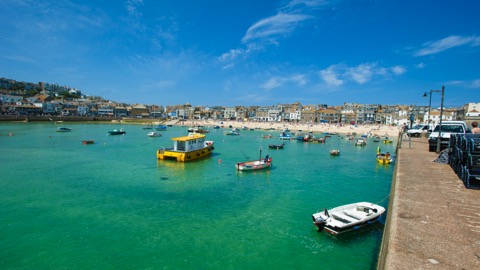
20% saving on brand-new four-storey townhouse bang in the centre of St Ives, Cornwall
Brand new, Pier View (sleeps six) is an impeccably designed four-storey townhouse, steps from the beach in the heart of St Ives, on Cornwall’s north coast. Decorated in subtle, soothing tones throughout, and finished with bespoke pieces of furniture and artwork, it’s a dreamy property with plenty of space for a family to sprawl; equally, it’s cosy enough for a couple seeking a luxurious and stylish bolthole.
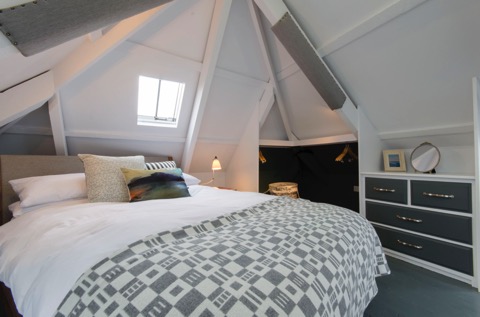
The beautiful living space, with views across the rooftops to the harbour, is divided into two areas: a snug with Smart TV (including Netflix and a PlayStation 3) and a wine fridge, plus a sitting room with a love seat and sofas flanking an elegant fireplace. The kitchen, accessed from a cobbled path through a powder-blue stable door, is airy and light and has just about every mod con you can imagine. Of the three sumptuous bedrooms, one has been specifically designed for children using panelling and pegs hung with toys.
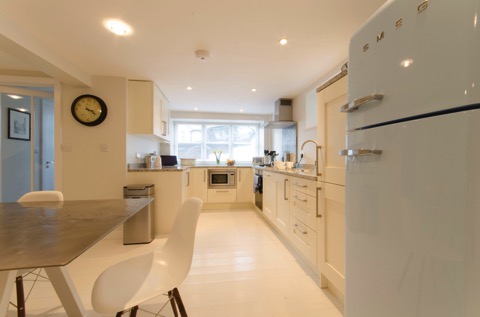
St Ives is a joy, with glorious sandy beaches, restaurants, shops, galleries and delis galore. What are you waiting for?
Introductory offer: for all stays between now and 27 March there is a 20% discount on Pier View. Long weekends (Friday to Monday) and midweek breaks (Monday to Friday) now cost from £136 pp (£811 total – was £1,013); weekly breaks cost from £180 pp (£1,080 total - was £1,350).
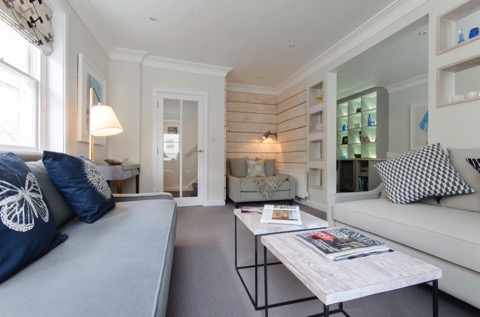
Call Boutique Retreats on 01872 553 491 www.boutique-retreats.co.uk for more information or to book.